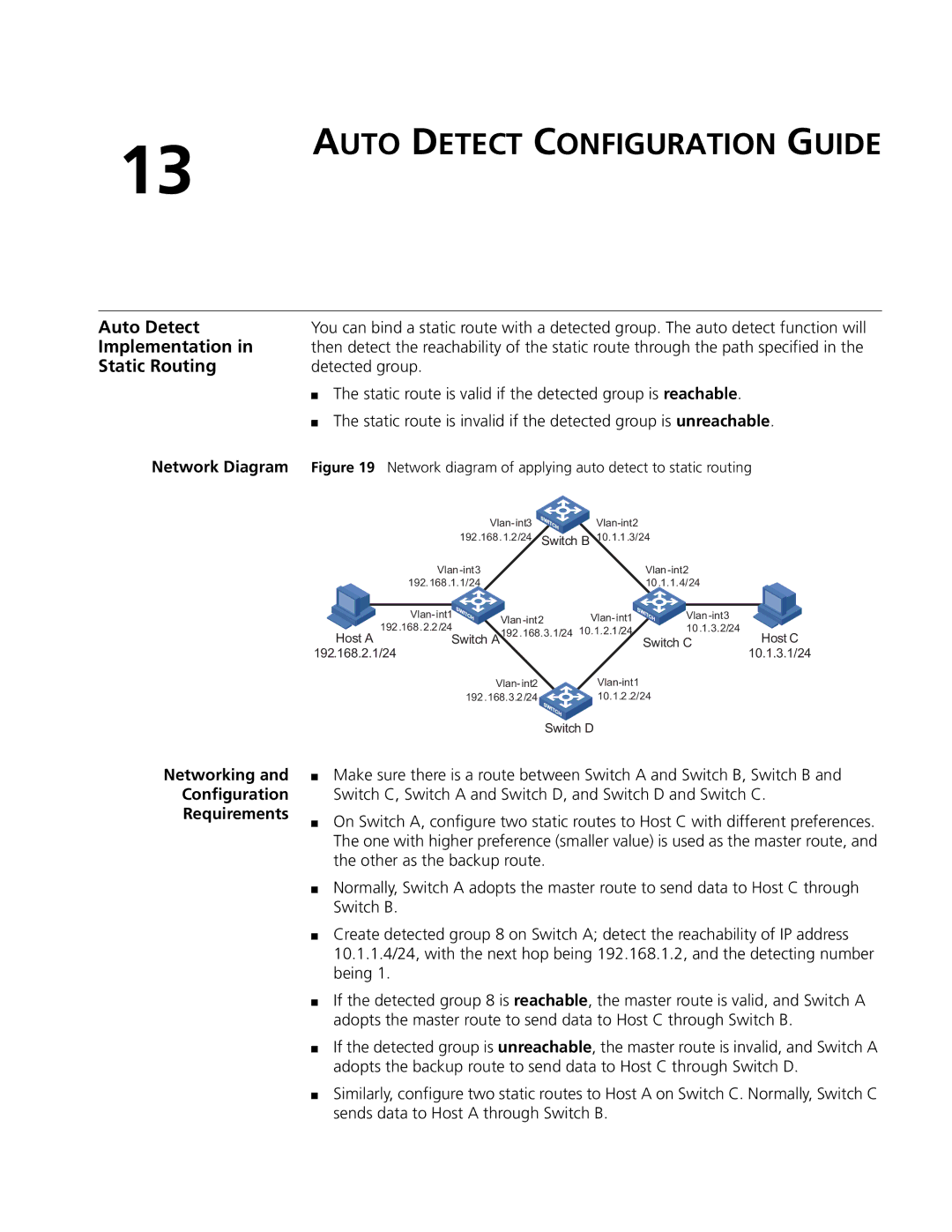
13
AUTO DETECT CONFIGURATION GUIDE
Auto Detect | You can bind a static route with a detected group. The auto detect function will | ||||||||||
Implementation in | then detect the reachability of the static route through the path specified in the | ||||||||||
Static Routing | detected group. |
|
|
|
|
|
|
|
| ||
| ■ The static route is valid if the detected group is reachable. |
|
| ||||||||
| ■ The static route is invalid if the detected group is unreachable. | ||||||||||
Network Diagram | Figure 19 Network diagram of applying auto detect to static routing | ||||||||||
|
|
|
|
| Vlan- int3 |
|
|
|
| ||
|
|
|
| 192.168.1.2 /24 Switch B 10.1.1 .3/24 |
|
| |||||
|
|
|
|
|
|
| |||||
|
|
| 192.168.1.1/24 |
|
| 10 .1.1.4/24 |
|
| |||
|
|
|
|
|
|
|
|
|
|
|
|
|
|
| Vlan- int1 |
|
| Vlan- int1 |
| Vlan |
|
| |
| Host A | 192.168.2.2 /24 |
|
| 192 .168.3.1/24 | 10.1.2.1 /24 | 10.1.3.2/24 | Host C | |||
| Switch A |
|
| Switch C | |||||||
| 192.168.2.1/24 |
|
|
|
|
|
| 10.1.3.1/24 | |||
|
|
|
|
| Vlan- int2 |
|
|
|
| ||
|
|
|
| 192.168.3.2 /24 | 10.1.2 .2/24 |
|
|
| |||
Switch D
Networking and
Configuration
Requirements
■Make sure there is a route between Switch A and Switch B, Switch B and Switch C, Switch A and Switch D, and Switch D and Switch C.
■On Switch A, configure two static routes to Host C with different preferences. The one with higher preference (smaller value) is used as the master route, and the other as the backup route.
■Normally, Switch A adopts the master route to send data to Host C through Switch B.
■Create detected group 8 on Switch A; detect the reachability of IP address 10.1.1.4/24, with the next hop being 192.168.1.2, and the detecting number being 1.
■If the detected group 8 is reachable, the master route is valid, and Switch A adopts the master route to send data to Host C through Switch B.
■If the detected group is unreachable, the master route is invalid, and Switch A adopts the backup route to send data to Host C through Switch D.
■Similarly, configure two static routes to Host A on Switch C. Normally, Switch C sends data to Host A through Switch B.
